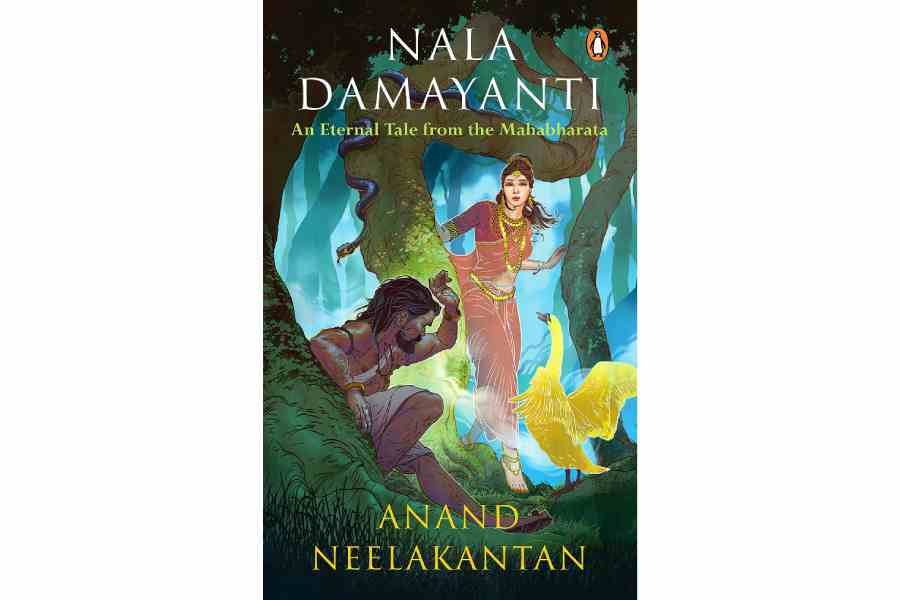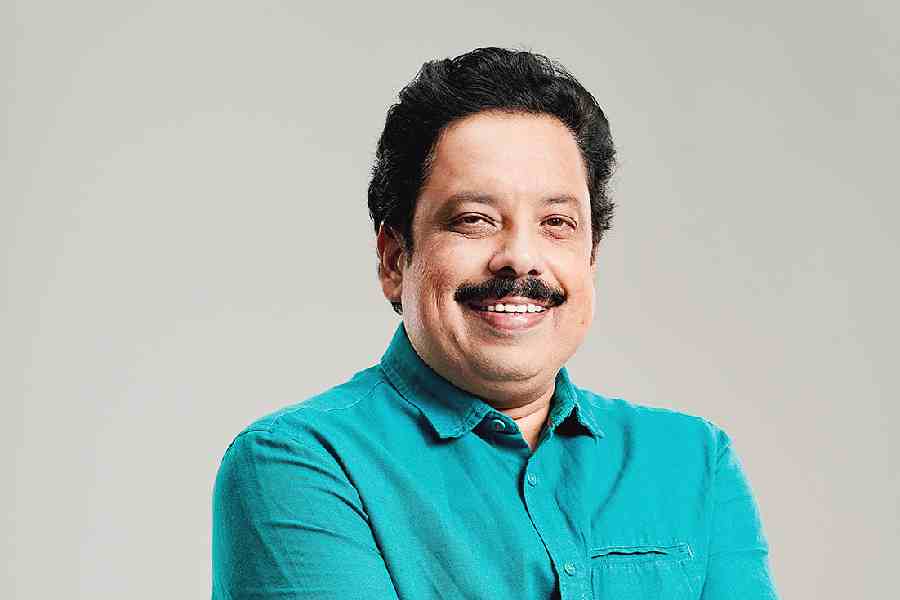Known for writing mythological fiction, Anand Neelakantan brings the epic love story of Nala and Damayanti in his latest read Nala Damayanti: An Eternal Tale from the Mahabharata. Ditching the conventional narration, the Kerala-born novelist, screenwriter and motivational speaker who is known for writing the novels that led to the blockbuster Bahubali films, tells the story from the perspective of Damayanti, who is a saviour and not a damsel in distress. In a free-flowing chat, Neelakantan tells us about the new book, why he can write endlessly on the genre and his upcoming book-to-screen projects. Excerpts:
The love story of Nala and Damayanti is not very well-known. What was it that led you to their story?
The love story of Nala and Damayanti is one of the first love stories known to man. Ancient Indian literature, not just in Sanskrit but also in other classical languages, celebrates this story through poetry, plays, paintings and other art forms. It is true that the story has remained relatively unknown for the modern generation, and my book is an attempt to tell it for the youth of today. It has all elements of a film that can rival anything from Hollywood or Bollywood, and I hope one day this will become a global film that I will script.
What is it about the story that convinced you to write a book on them?
Conventionally, Nala Damayanti tale is told from the perspective of Nala and how fate intervened in his life. But a different story emerges when the gaze shifts from Nala to Damayanti. This becomes a tale of grit, determination and triumph of love over all odds. From a melodramatic story of pathos, it becomes an inspiring tale of a woman of substance. I thought the tale of Nala had been told many times, so why not tell it from Damayanti’s perspective? Why should it always be the daring prince coming to the rescue of the distressed damsel? Why can’t it be the other way around?
Is it just a love story or there’s more to it?
The greatest of all emotions is love. The greatest of all rasa is Sringara. Because in it, every other emotion is contained. Nala Damayanti is not just a love story with a happy ending, it is an inspirational guide to life. It is the tale of how humans can vanquish even gods if they trust in themselves.
You choose humour here as opposed to your earlier novels. Why is that?
I deliberately choose a humorous tone as the conventional Nala Damayanti story uses a poignant, heartfelt tone with many lamentations about the pangs of separation and misfortune. The ancient poetries and poets wrote Nala Damayanti beautifully and poetically, but the story’s spirit belonged to a bygone era. Women have often been portrayed as weak and flippant characters who desperately wait for the hero to rescue them from their fate or the villain and hence a serious tone is often used to tell such tales. Here, I have flipped the narrative to tell it from the point of view of a woman and her close confidante and messenger of love, Hemanga, the golden swan. In this narrative, I wanted my heroes, Damayanti and Hemanga, to be spirited and with a wicked sense of humour and not hapless characters, drowning in sorrow and waiting for the hero to rescue them. Putting it simply, the world can be saved by a woman and a little swan and their sense of humour, and it can be done without bloodshed and apocalyptic wars.
You have written so many stories inspired by the Mahabharata and the Ramayana. What is it about the mythologies that inspire you to write one book after another?
Indian Puranas, Hindu, Buddhist and Jain, and the huge treasure trove of folk tales in various languages have covered everything about life. I can take another hundred lives as a writer and write countless books inspired by this fabulous tradition spanning many thousand years. I would not have exhausted even a minuscule percentage of it.
The genre of mythology is growing with more writers writing in it. Do you think it has a saturation point or is it indefinite?
Many writers are writing in the genre inspired by Hindu Puranas. Like any other genre, there are great books, good books, average books, and trash in this genre too. This genre is here to stay. However, like any other genre, only the well-written ones and the writers who are serious about this genre will survive and thrive. This is not an easy genre to write as it requires a lot of reading, research and hard work. It is a given that those who followed the trend and jumped on the bandwagon will wither away.
Your books produced the superhit Babhubali films. How has life changed post that?
People used to know me as the writer of Asura, Ajaya and Vanara, and I am still recognised for those works among serious readers. What the popularity of the Bahubali books and films did was make my name recognisable to even the non-reading public, and I am grateful for that. It also helped me shift from a popular television writer to a writer of films and OTT shows.

Name: Nala Damayanti | Published by: Penguin India | Price: Rs 215 | Available on Amazon
What are your earlier influences of the epics that made you a writer?
My childhood is filled with memories of classical art forms and storytelling sessions based on Hindu Puranas and Ithihasas. My parents and siblings played a huge part in familiarising me with this enchanting world. My writing owes a lot to my upbringing and the cultural richness of Kerala, which is rooted in traditions.
Any other book of yours that is slated to be adapted for the screen?
I have co-written the screenplay of a Mahabharata-based film with director Rakeysh Om Prakash Mehra. The film series is loosely based on my Ajaya series. My Vanara book is slated to be a film and the rights have been sold. My children’s books Asura Tales and the chapter book series based on Narada are becoming an animation series.
What’s happening in the non-mythology genre?
I have written in many other genres for television and OTT. I was the co-writer of Taj series in Zee5, which is based on the Mughal empire. I had written the series Sarfarosh, based on the battle of Sargarhi, for Netflix. I am now writing a business thriller for Rohan Sippy and a spy thriller for a major OTT channel. It is only in books that I have stuck to Hindu Purana-based stories. Publishers are more conservative than film producers and television channels and are comfortable sticking to the genre in which an author has been successful in the past, so I am finding it difficult to get offers from publishers to get my other genres published. I have kept the book rights to many shows in various genres I have written, and one day, I will publish them as novels.
Besides writing, you have also acted in a TV show. Do you intend to explore acting this year?
Once upon a time, when I had a regular corporate job, writing was my hobby. Now, writing is my livelihood and profession, and I need a hobby. As I love to experiment with things, I tried acting. I took acting classes, and I keep trying to improve my acting skills. Who knows when the opportunity will beckon? I should not lose it for the lack of effort or preparation. I have acted in a series and two ad films so far. If any producer or director is reading this, please consider this as a request for a suitable role. I do enjoy acting. Who knows, one day, it may also become a profession for me. It is a short, sweet life that humans have. Why not do whatever is possible and enjoy every moment?
What’s the next novel that you are working on?
There is a non-fiction series on different Ramayanas, two children’s books, one self-help book and three audiobook originals in the pipeline. Apart from the shows and films, I am writing a novel based on ancient Tamil lands and also on another love story from Hindu epics. Both are in the fantasy genre and have grand settings like the Lord of the Rings. This is a genre I want to explore now. And if any publisher wants to take the risk, I would be happy to convert the successful thriller series I had written for OTTs and television, and those books will see the light of day. My first non-fiction, Asura Marga-Live Like An Asura, will also hit the stands this year.






